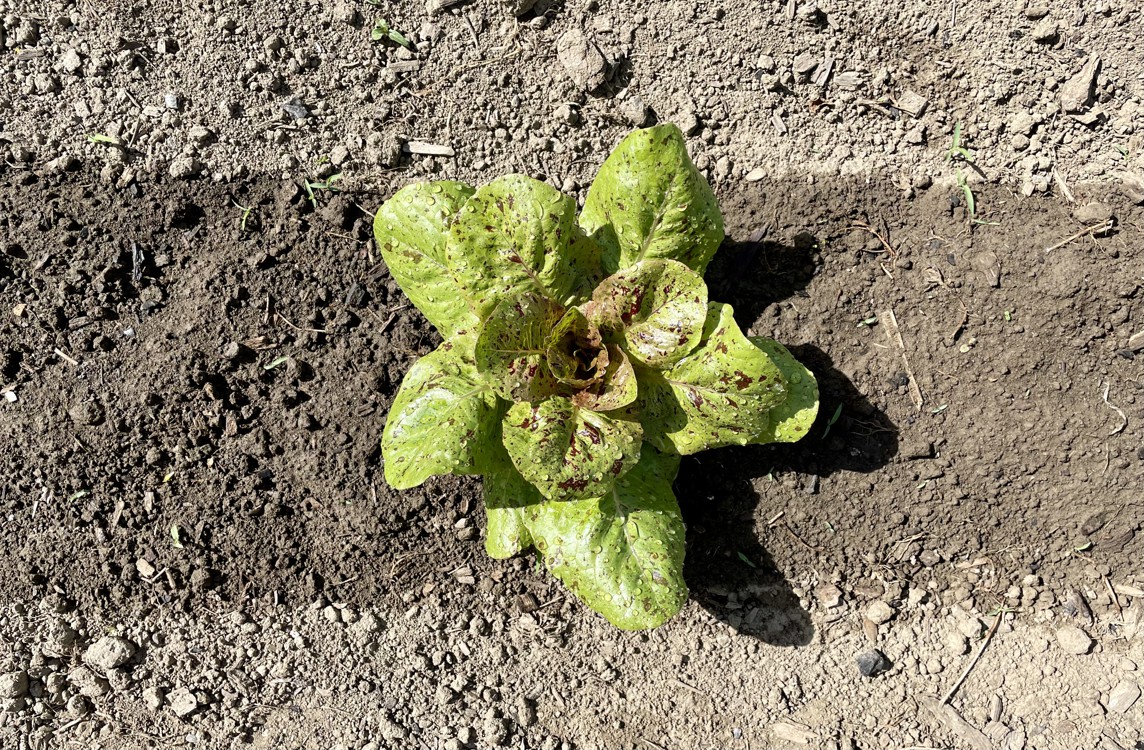The $200 Lettuce
I’m standing in a dirt field on a hill above the park’s baseball diamonds. Beneath my gaze, scattered in no discernible pattern, are growing four heads of lettuce. As best as I can determine, one head is ready to be harvested, so I pull it from the ground. It looks no different from one purchased at a supermarket, but it’s very special. It cost about $200. I know this because I grew it myself.

I started my garden in May. After a misstart involving a misassigned plot, I began growing just about anything that I would eat or put in a vase that grows in central Vermont, or as the USDA refers to it, hardiness zone 4b. I planted lettuce, kale, carrots, peas, tomatoes, cantaloupes, watermelon, zinnias, and stock.
And now, eleven weeks into the growing season, I’ve reached the halfway point. While proud of my meager lettuce crop, my success as a farmer is belied by sections of land that I’ve forfeited to the weeds. That said, this novice has some advice for anyone endeavoring on their first vegetable patch:
- Start with a plan. A good plan signals commitment—in my case, a 700 ft2 commitment—to the project. Buy many different seeds. Read and reread the instructions on the packet. Measure your plot, and draw a diagram. Account for the way the sun lands and water falls. Err on the side of planting too shallow than too deep. Direct sow instead of transplanting when conditions allow; it’ll save time and frustration. If transplanting is necessary, use large-cell trays or peat pots and keep the soil moist. Once they sprout, provide plenty of light. Don’t attempt to harden the seedlings early, otherwise their growth will be stunted.
- Get the right tools. In addition to seeds, I recommend a stirrup hoe, a hand tool set, gardening gloves, a watering can, and a mower. Don’t overinvest. Like shopping for most hobbies, most supplies are nice but unnecessary, and some are more toy than tool. For particularly fertile soil, buy small stakes to help identify slower-starting seedlings and differentiate them from weeds. For (relative) comfort, wear a wide-brimmed hat and apply generous amounts of bug spray. Choose an insect repellent with 30% DEET, Picaridin, or Lemon of Eucalyptus. The natural kinds don’t work.
- Lower your expectations. My three rows of watermelon seeds sprouted just three watermelon plants. (To avoid this scenario, sow multiple seeds adjacent to one another, and then “thin” by clipping all but the most eager of the seedlings.) By diversifying a garden, the downside—and the penalties of bugs, blight, or incompetence—is minimized. A mix also staggers your harvests across the season. Techniques like succession sowing and fall starts can be applied to iterate and improve without waiting until the next season. ■
